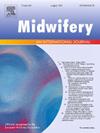"意外怀孕后,我们希望附近的助产士能告诉我们该怎么做"。刚果民主共和国金沙萨省利益相关者对助产士主导的以妇女为中心的综合人工流产护理的看法:定性描述研究。
IF 2.6
3区 医学
Q1 NURSING
引用次数: 0
摘要
问题:助产士是改善不安全人工流产结果、增加人工流产机会和避孕护理的重要卫生人力资源,但却未得到充分利用。背景:在刚果民主共和国(刚果(金)),不安全人工流产导致的发病率和死亡率高得惊人:在刚果民主共和国(DRC),不安全堕胎导致的发病率和死亡率高得惊人。最近于 2018 年批准的《马普托议定书》使安全堕胎成为可能。国家实施战略承认助产士是全面堕胎护理(CAC)的提供者,但人们对助产士目前在提供CAC方面的作用了解甚少。目的:了解将助产士CAC模式纳入刚果民主共和国医疗系统的障碍和促进因素:方法:采用定性描述设计,探讨刚果民主共和国金沙萨卫生系统利益相关者对助产CAC模式的看法。数据来源包括 n = 43 次关键信息提供者访谈和 n = 2 次 FGD。调查结果与刚果民主共和国助产士协会(SCOSAF)成员进行了核对:调查结果显示,助产士提供了 CAC 的各个方面,关注客户的社会心理健康,并在社区中充当健康服务导航员。适当的助产立法、包括 CAC 在内的执业范围、行政支持和薪酬,以及更好地接受继续教育,都是促进助产 CAC 模式的卫生系统因素。最后,助产士协会 SCOSAF 在实施过程中发挥了有影响力的作用,积极支持助产士整合 CAC:讨论:了解卫生系统的杠杆作用和助产士协会的参与是整合和维持 CAC 助产模式的重要考虑因素。考虑到助产过程中固有的系统性性别不平等问题,性别变革方法是适当的:需要进一步开展研究,以了解 CAC 助产模式在刚果民主共和国的影响。本文章由计算机程序翻译,如有差异,请以英文原文为准。
“With an unwanted pregnancy, we are looking for midwives in the neighbourhood to show us what to do.” Stakeholder perceptions of midwife-led woman-centred comprehensive abortion care in the province of Kinshasa, Democratic Republic of Congo: a qualitative descriptive study
Problem
Midwives are an essential yet underutilised health human resource for improving unsafe abortion outcomes and increasing abortion access and contraceptive care.
Background
In Democratic Republic of Congo (DRC), morbidity and mortality resulting from unsafe abortions are alarmingly high. The recent ratification of the Maputo Protocol in 2018 has made safe abortion accessible. National implementation strategies recognise midwives as providers of comprehensive abortion care (CAC), yet there is little understanding of their current role in its provision.
Aim
To understand the obstacles and facilitators in integrating the midwifery model of CAC in DRC's health system.
Methods
A qualitative descriptive design was used to explore health system stakeholders' perceptions regarding the midwifery model of CAC in Kinshasa, DRC. Data sources included n = 43 key informant interviews and n = 2 FGDs. Results were member-checked with DRC Midwives’ Association (SCOSAF) members.
Findings
Findings highlight midwives provided all aspects of CAC, with attention to the psycho-social well-being of their clients and acted as health service navigators in the community. Appropriate midwifery legislation, scope of practice that includes CAC, administrative support and remuneration, and better access to continuing education are facilitating health system factors for the midwifery model of CAC. Finally, SCOSAF, the Midwives’ Association, played an influential role in the implementation, positively supporting CAC integration by midwives.
Discussion
Understanding health system levers and the involvement of Midwives’ Associations are important considerations when integrating and sustaining the midwifery model of CAC. Gender transformative approaches are appropriate given systemic gender inequities inherent in midwifery.
Conclusion
Further research is needed to understand the impact of the midwifery model of CAC in DRC.
求助全文
通过发布文献求助,成功后即可免费获取论文全文。
去求助
来源期刊

Midwifery
医学-护理
CiteScore
4.50
自引率
7.40%
发文量
221
审稿时长
13.4 weeks
期刊介绍:
Midwifery publishes the latest peer reviewed international research to inform the safety, quality, outcomes and experiences of pregnancy, birth and maternity care for childbearing women, their babies and families. The journal’s publications support midwives and maternity care providers to explore and develop their knowledge, skills and attitudes informed by best available evidence.
Midwifery provides an international, interdisciplinary forum for the publication, dissemination and discussion of advances in evidence, controversies and current research, and promotes continuing education through publication of systematic and other scholarly reviews and updates. Midwifery articles cover the cultural, clinical, psycho-social, sociological, epidemiological, education, managerial, workforce, organizational and technological areas of practice in preconception, maternal and infant care.
The journal welcomes the highest quality scholarly research that employs rigorous methodology. Midwifery is a leading international journal in midwifery and maternal health with a current impact factor of 1.861 (© Thomson Reuters Journal Citation Reports 2016) and employs a double-blind peer review process.
 求助内容:
求助内容: 应助结果提醒方式:
应助结果提醒方式:


